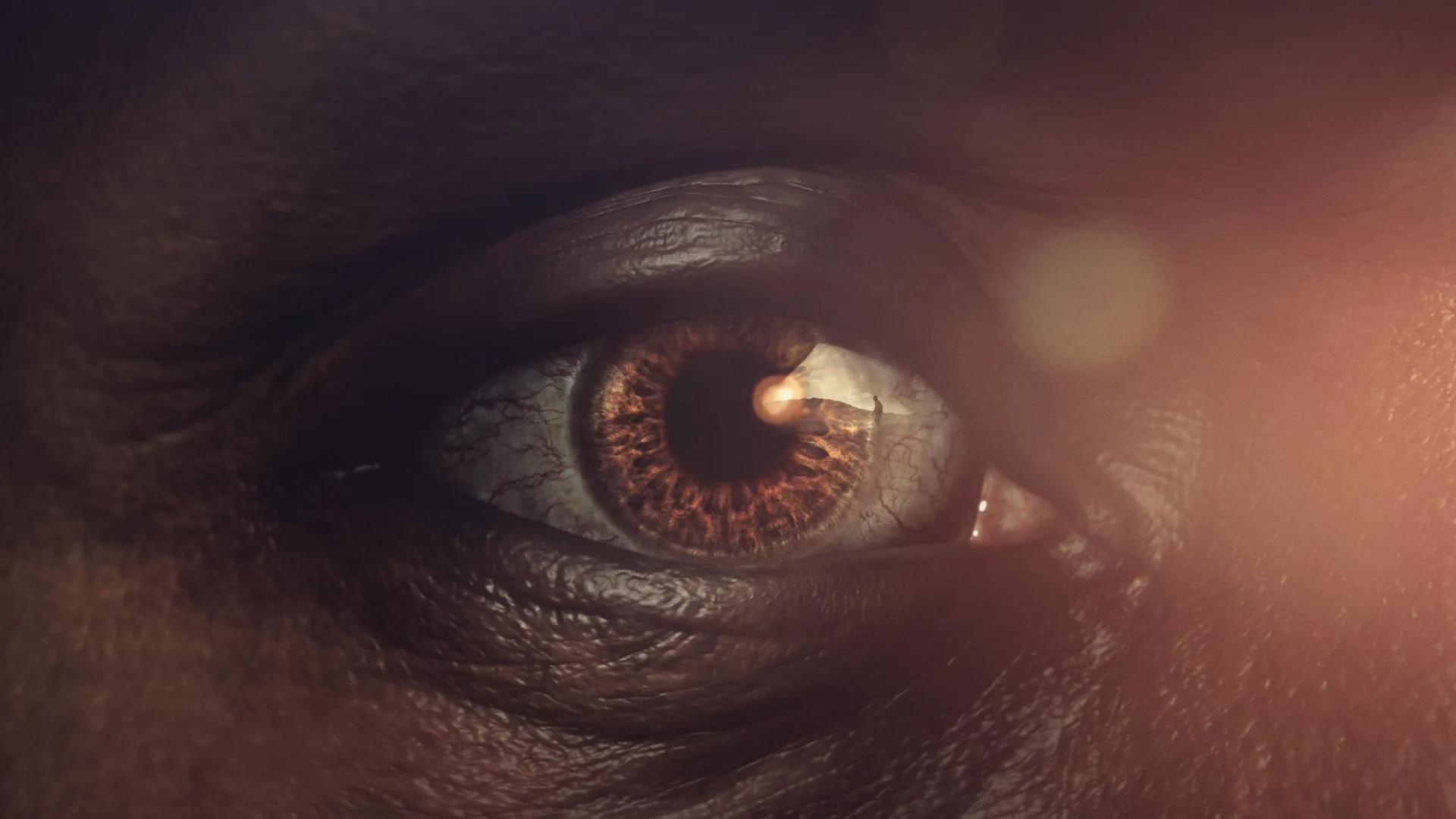Test your appraisal knowledge in ROADSHOW's new game — Price Range!
A 1946 Einstein-signed group, an Agassiz pendant watch & a Chinese bronze vase.
HOST: ANTIQUES ROADSHOW is seeking the treasures of Orlando, Florida.
GUEST: I shook everybody's hand that ever signed this bat.
APPRAISER: Wow!
GUEST: (laughing): Wow.
GUEST: Holy smoke! Really? That's great!
HOST: ROADSHOW stopped by the Orlando Museum of Art and got a glimpse at some impressive artifacts of the ancient Americas, such as this shaman figure vessel from the Nazca region of Peru. Over 1,500 years old, it's a fine example of the Nazca culture's bold geometric designs and colors. Back at the ROADSHOW, other pre-Columbian works of art are ready for their close-up. But right now, check out this 20th century grouping related to a world-renowned genius.
GUEST: In 1946, Lincoln University-- which is a small black university in Pennsylvania-- was awarding Dr. Einstein an honorary degree.
APPRAISER: Yes.
GUEST: And my husband was a freelance photographer who got the job to shoot the photographs.
APPRAISER: Uh-huh.
GUEST: And so the first is the shot of Einstein coming down toward the ceremony. He had been having stomach problems, and they were feeding him baby food.
APPRAISER: Yes, yes, he had an aneurism, and it was also the cause of his death. This particular example is nice because it's been signed.
GUEST: Yes.
APPRAISER: "To Arnold Cain, Albert Einstein, 1946."
GUEST: Einstein's daughter requested that she would like a copy.
APPRAISER: Your husband sent at least one or two copies.
GUEST: Yes.
APPRAISER: One to the daughter, and then Einstein himself signed a copy to send back to your husband.
GUEST: Yeah, and Einstein's daughter sent it back.
APPRAISER: Well, it's a really fascinating group. Obviously, we occasionally see photographs signed by Einstein. But the circumstances around this whole event make it that much more special, I think. As you mentioned, Lincoln University, one of the first African American colleges in the country. Langston Hughes, Thurgood Marshall, Cab Calloway were all students there. And at this time in his life, Einstein was reticent about doing any honorary doctorates or any presentations at universities because of his ill health. But he accepted the offer from Horace Mann Bond, who is in this picture. Horace Mann Bond was a leader in the developing civil rights movement. And on this particular occasion, his six-year-old son, Julian Bond, was at the session. And apparently, Einstein had given him advice that he should never remember anything that's already written down. And of course, Julian Bond ended up becoming the head of the NAACP many, many years later. So what I think is fascinating about the photograph, above and beyond that it's an image your husband took of a very special event, is it speaks to Einstein's unrecognized-- until most recently-- interest in civil rights. He obviously was a refugee from Europe himself as a Jew who came over in 1933. He could not return. And he spoke eloquently at this event of his concerns for racism and his feeling that what he called a "white man's disease" and that he wanted to speak out. When Marian Anderson, the singer, came to Princeton, she was denied access to a local inn. And reportedly, Einstein put her up for the evening. He also worked very closely with Paul Robeson, who started the American crusade to end lynching and was certainly very, very sensitive to the problems of segregation that still existed at places like Princeton. Unfortunately, as I understand it, this particular speech on this particular day, although it might have gotten some local press, was not widely reported. And really, in some respects, your photographs have brought this back to the attention of others, and hopefully will be a subject of further discussion.
GUEST: My husband said that his opening words at the presentation was, "I do not need another honorary degree. I have other concerns."
APPRAISER: Uh-huh, did he go on to discuss the atomic bomb?
GUEST: Yes.
APPRAISER: Yeah, because obviously that was forefront in his mind, it being just within a year of those events. Do you know what happened later in the day when he was there?
GUEST: He went into the classroom and they had all of the top students, and my husband wrote down a little bit of what happened.
APPRAISER: So this was a piece of description that went with the photograph your husband took.
GUEST: Yeah.
APPRAISER: And what we read here is, "In this photo is Einstein's amused reaction to the first question asked by one of the students, which was, 'Professor, can you explain in simple language your theory of relativity?'" And then he went on to proceed to provide an explanation. This is also another extraordinarily rare event for him to do an informal lecture on relativity. We don't see very many signed photographs by Einstein and ones with this interesting historical resonance. I think that this particular example would have an auction estimate of $6,000 to $8,000.
GUEST: Thank you.
APPRAISER: And the entire group, with the additional photographs, would be $7,000 to $9,000.
GUEST: That's wonderful.
APPRAISER: Well, thank you so much for bringing...
GUEST: Thank you.
APPRAISER: ...this very interesting window into the life of Einstein at this particular time of his life.
GUEST: Well, it's our prized possession.
GUEST: Well, we have a local retirement thrift store that I like to go to a lot. And I bought that at the shop. Since I've had it, different people have asked me whether it's real or fake. They can't tell. And maybe it could be Roseville, we don't know.
APPRAISER: A lot of fakes of Roseville are coming out of China these days. And a fairly large percentage of what I see are Chinese fakes of Roseville pottery. And because this is such an unusual piece, I can see why that might be suggested by people you've shown it to. And the reason nobody knows for sure who made this is because it's an experimental piece. It was not a piece that was ever put in production. It looks like a geranium pattern to me.
GUEST: Yeah, yeah.
APPRAISER: I grew up on a geranium-- tomato and geranium farm-- so I know a thing or two about geraniums. Because of this color in the background and this crosshatching, you can also date what era experimental this is. Because they made experimental pieces from relatively early to relatively late, and they were in business for 60 years, 70 years. Roseville pottery was one of the primary production potteries in America for the first half of the 20th century. And while they made very good art ware, up till about 1910, because of the rise of production costs of actual artist labor, they scaled back from hand-decorated pieces to molded pieces where the color would have just been brushed on an existing design, hence production ware. If this were put into production they would have made thousands of them. And Roseville became famous for the quality of their production ware. It was the most imaginative anywhere in America. I've sold production pieces of Roseville for tens of thousands of dollars, so it's quite popular, quite famous for that. Unlike their other rivals in Zanesville, like the Weller Pottery or the Owens Company-- also famous potteries-- their production lines didn't come near what Roseville was cranking out...
GUEST: Uh-huh.
APPRAISER: ...in the first half of the 20th century. This color and this crosshatching is typical of pieces that were made in the '20s.
GUEST: There's two different colorations on there. Is that just part of the experiment a little bit or...
APPRAISER: I think so, because normally on the pieces that are actually produced, they may only use the brown color, or they may use the blue color as a background. But they'll be consistent on both sides. This one, because it's a trial piece, I guess they wanted to show both variations of it. And how else do we know it's Roseville? This color clay right here, this buff-colored clay, that's classic Zanesville clay. It fires this soft yellowish color. And furthermore, there's a gentle foot ring. That's classic Roseville ware from any period, but especially without being marked.
GUEST: Okay.
APPRAISER: Because it would have had a silver-colored foil label at the time. This brown even is classic Roseville '20s color. Usually found on the wisteria pattern, so this looks like a wisteria variation geranium pattern trial production piece from the Roseville company. So that's a really good thing. At auction today, it's worth about $2,000 at auction.
GUEST: Wow! Oh, that's terrific.
APPRAISER: Here's the downside. This was worth, ten years ago, about $5,000.
GUEST: Wow.
APPRAISER: And what's happened is the people that were buying it aren't buying anymore so much. And new people are not coming into the market. But in spite of the price drop-off that we've seen in Roseville over the last decade, you still have a piece that should certainly bring $2,000.
GUEST: Oh wow.
APPRAISER: And maybe bring a little more.
GUEST: That's marvelous. Not bad for a $40 investment.
APPRAISER: That's excellent.
GUEST: (laughs)
APPRAISER: Did you pay much money for it?
GUEST: No, I only paid about five bucks for it.
APPRAISER: It does have some appeal to a traveling desk collector. And that collector would probably pay in the neighborhood of $150 for it, so you did great with your five-dollar purchase.
APPRAISER: There's a little bit of condition problems, as you can see. The paper is toned, it's kind of yellowing a little bit, but it's a charming scene here. Really quite attractive and decorative.
APPRAISER: The quality of the carving here is just amazing. It's just so good and wonderful. Elegant patina.
APPRAISER: ...the finishing on the bottom of the log.
APPRAISER: Imagine carving that?
GUEST: No. (laughing)
APPRAISER: Starting out with a block of wood and ending up with this.
GUEST: Much to my parents' sorrow, I was an avid collector in the early '60s. And they were devout Southern Baptists, so they thought it was a waste of time and money. Well, for several years I got away with it. And then one day after about 500 comics or so later, we had a war. And they won the war, but I did win a battle. I told them there was about 150, about a third of my collection that I was not going to part with. I was going to leave home first. Well, my bluff worked. These were some of the better ones that I managed to save.
APPRAISER: On the top row we have the first of each issue: the Fantastic Four, the Avengers, the X-Men, and Justice League of America. And on the bottom row we have the second issue of each series. And they're all in tremendous shape. I mean whatever you were doing to hide these from your parents, you've done a great job. If you look closely, a lot of these have a little staple hole in the front.
GUEST: The corner store druggist was grouchy at times, and we would go in and fan through to see if we really wanted to buy it or not. Well, he decided he didn't like us fondling his merchandise, so he got his stapler... (imitating stapler click) ...and away he went. So we had to buy them unlooked-at.
APPRAISER: Well, that is actually not that uncommon. They do detract from the value somewhat because it's all about the condition with these things. But overall, they're in such great shape, those pinholes are of very little consequence. They're in what we call ungraded condition. They haven't been taken by a third party, encapsulated and professionally graded. But the condition they're in, good to very good condition. For this collection, I'd estimate at auction this would be between $15,000 and $20,000.
GUEST: Well, for 80 cents... (laughing) That's pretty good, huh? (laughing)
GUEST: A few years back my wife was walking in the mall, and she saw this bat in the comic store.
APPRAISER: Unsigned.
GUEST: Unsigned, and she says, "Let me get it for my husband because I... he loves baseball." She says that was the sorriest thing she ever did. (laughing)
APPRAISER: I bet, right? This has taken some tremendous work on your part, hasn't it?
GUEST: Oh, definitely.
APPRAISER: How many signatures are on this bat?
GUEST: Three hundred and fifty-seven.
APPRAISER: Wow. And these are sorts of players from all sorts of eras, correct?
GUEST: All eras, yes.
APPRAISER: Yeah, so who was the first signature you got?
GUEST: My first signature was Mel Allen. He was just as famous as Joe DiMaggio in that time.
APPRAISER: Sure. Tell me, how did you obtain these signatures?
GUEST: My son, I used to take him to the shows with me. Sports cards shows up in New York and New Jersey, and he loved it.
APPRAISER: So which is your favorite signature on here?
GUEST: My favorite is Stan Musial. Stan the Man, right here.
APPRAISER: Who just recently passed, so was he one of your favorite ballplayers?
GUEST: One of my favorites. I think he was the best ballplayer ever. Best hitter ever.
APPRAISER: What did he do when he saw this bat?
GUEST: Well, he looked at it, and he shook my... I shook... I shook everybody's hand that ever signed this bat.
APPRAISER: Wow! That's cool.
GUEST: And I loved it, I still love it.
APPRAISER: There are dozens and dozens of Hall-of-Famers on here. Dozens. A lot of guys who aren't with us anymore. There are a lot of culty ballplayers on here I noticed. So you've really... you know, you've really kind of run the gamut with this thing. There's still a few spaces here, so is this something you're going to continue working on?
GUEST: I'm always working on it.
APPRAISER: So is there one particular signature you would love to get on this bat?
GUEST: Yes, I would love to get Derek Jeter. I live Jeter, and I would love to get him.
APPRAISER: When did you get this? How long has this taken to put together?
GUEST: I'd say about '95.
APPRAISER: What is the most recent signature?
GUEST: The most recent signature I have was Bryce Harper at the Washington training camp, Dusty Baker, and Davey Lopes.
APPRAISER: (laughing): You must stand out, you know.
GUEST: A lot of guys that were excited signing it. Before they would sign it they would look over the bat. And at Atlantic City, Tom Seaver says to me, "take care of this bat," he goes.
APPRAISER: He knows, because you know, he signs a million things, and he probably doesn't sign anything like this. So I kind of agree with Tom Seaver, I got to say, I think it's a very, very special bat. Now we see multiple-signed things all the time. But something that stands out as striking as this, the fact that it's a white bat that you can really see all the signatures on here, and you've done such a great job and so many interesting players. Do you happen to know how much your wife originally paid for the bat?
GUEST: I think she paid like $60 for it.
APPRAISER: We wouldn't insure it for anything less than $10,000.
GUEST: $10,000. It's unbelievable, wow, very nice. I just love it. It's part of my life, really, it's part of my life.
GUEST: I was at a garage sale in Sebring, and I was on my way out, and I saw it laying up against the garbage can. And I asked the woman if she'd mind if I took it because I wanted the glass and the frame. And she said, "You can have it, take it." So 15 years ago, I scooped it up, put it in the back of my car, and off I went.
APPRAISER: Well, you mentioned the glass and the frame. What about the painting? Did that register at all?
GUEST: No, not for me, it did not appeal to me at all.
APPRAISER: Is this one you have hanging? Is it one you enjoy on a regular basis?
GUEST: No, not really. I did not want to get rid of it because I knew that there was some value in the frame and the glass. So I put it under a bed for several years, and then the cat was sleeping on it, so I took it out, dusted it off and put it back in the closet. And then put some luggage in front of it so it wouldn't get broken, and that's where I pulled it out this morning.
APPRAISER: It's signed and dated '44, 1944 down here.
GUEST: Yes.
APPRAISER: Now, do you know anything about Kelly Fearing? Did you get a chance to do any research about that?
GUEST: Well, that he is from the Fort Worth area, and that he belonged to an artist circle there, and that he graduated, I think, from Columbia.
APPRAISER: Mm-hmm.
GUEST: He seemed to be fairly accomplished.
APPRAISER: He was born in 1918, and I think it was Arkansas in fact. And then you're quite correct, he graduated from Columbia University. In 1943 he moved to Fort Worth.
GUEST: Okay.
APPRAISER: And he became part of what was known then as the Fort Worth Circle. Now, bear in mind in Texas at that time, they were very much in thrall to American regionalism. This is the 1930s and '40s. If they weren't doing bluebonnets and cowboys, which were very popular in Texas at that point, they were doing regionalist paintings. Now, the interesting thing about the Fort Worth circle is that they really advanced the cause of European modernism in Texas. So they were looking at Miró, they were looking at Picasso and Braque and the Surrealists and all those things. So he was a great proponent and supporter of theirs. And you can see all those elements feeding into this painting, I see. Particularly Surrealism, Metaphysical Surrealism.
GUEST: Mm-hmm.
APPRAISER: I think it's a fascinating picture. It ticks all the boxes for me. It's the kind of thing I enjoy looking at. Some people might find it a little disturbing-- the houses are almost a little somewhere between Edward Hopper and Bates Motel.
GUEST: (laughing) Right.
APPRAISER: And the figures here and the terrible weather and whatnot.
GUEST: They're struggling.
APPRAISER: The broken-down car. Clearly it's a slightly depressing time, but bear in mind this is 1944, the Second World War was raging.
GUEST: Mm-hmm.
APPRAISER: And he was an interesting chap. He taught for over 40 years at the University of Texas in Austin. And he was a very spiritual kind of fellow. He used to go to India, he was interested in mysticism. And I think that imbues a lot of what's happening in this painting in fact. So I think he's a fascinating artist. And the medium is watercolor, I don't know if you noticed.
GUEST: Yes, I knew it was a watercolor.
APPRAISER: With a little bit of gouache as well, or some people call body color, which just adds a little substance to it. So the painting, I would think quite comfortably at auction probably $5,000 to $8,000.
GUEST: Okay, very good. That's very interesting.
APPRAISER: So not bad.
GUEST: No.
APPRAISER: And the frame and the glass?
GUEST: (laughing)
APPRAISER: Five dollars, maybe five dollars.
GUEST: Well, as long as I can get something for the frame and the glass.
APPRAISER: There you are.
APPRAISER: Well, it's a reproduction of a Stradivarius, it's not a Stradivarius. It's in pretty good condition, with one exception, and that's the varnish has been taken off of it. So any time you re-varnish or take the varnish off something it's going to hurt the value.
GUEST: Good to know.
APPRAISER: New Mexican, Native American pottery, San Juan Pueblo. It's in very good condition, good color and value, I think, in the neighborhood of about $75.
GUEST: Okay, great.
APPRAISER: What do you have?
GUEST: I have a bracelet. It's from Peru. It was my great-grandma's. We're thinking from the 1930s possibly.
APPRAISER: You could do the whole appraisal, just keep going.
GUEST: That's all I know.
APPRAISER: This is a type of jewelry that a lot of people would go visit and they'd bring back as tourists. It's the kind of thing if you had to buy it today in an antique shop, it's probably $100.
GUEST: All right.
APPRAISER: All right?
GUEST: Thank you so much.
GUEST: I found them at a flea market in Georgia on a back road about ten years ago. They were six dollars.
APPRAISER: And you didn't have to haggle.
GUEST: I did not have to haggle, no.
APPRAISER: They are part of a costume. A clown shoe basically, right?
GUEST: Yes.
APPRAISER: They are a man's shoe. They're not really expensive men's shoes. They're maybe from the '30s, '40s, and then they have a very durable leather extension. What I found so interesting about this was that you found them in rural Georgia. And it made me think about someone making their own shoes for a costume, that was their job, and then traveling around to small areas bringing shows and laughter. And I would put a value in a retail shop of about $500 on them.
GUEST: Really?
APPRAISER: I would.
GUEST: That's great.
GUEST: This clock is from the furnishings of the Fox Theater in Atlanta, Georgia. And my grandfather, Arthur Lucas, owned theaters all over the South. And the Fox was one of his theaters. Back in the day, when they decorated theaters, they were very elaborate...
APPRAISER: Right.
GUEST: ...in their furnishings. And then my grandfather died, but my grandmother was still living. And they were remodeling the inside of the theater, and they were just getting rid of the things, and they called her and said, "We really think you might want this clock." And she said, "Yes, I'll take it." And it's just part of our family history.
APPRAISER: Well, certainly very appropriate for a theater. It's about as elaborate as a clock gets, it really is sort of over the top. This is what we call a Boulle gilded mantel clock.
GUEST: All right.
APPRAISER: And Boulle refers to this marquetry inlaid brass all throughout the clock. And it's a gentleman named André-Charles Boulle, who was a French cabinetmaker that in the late 17th century made this Boulle work famous. But this is a copy made circa 1880. This brass inlay could be inlaid in wood, or tortoise shell, all different materials. This is a laminate here that probably was to imitate tortoise shell. It starts at the top with Athena, the goddess of... the warrior. She was the goddess of reason, arts, literature, which is very appropriate for the theater. It has this beautiful brass dial with these raised enameled numerals. And it all sits on these four rearing horses, which is probably my favorite part of the clock. And it's inlaid throughout the whole bottom of the case. A really high quality copy, and a lot of people don't know the difference. But if you look at the movement back here... Got to access the back. It's just a simple brass movement that's spring-driven. Uh-huh. And it strikes on a bell, which is nice. If it were a First Period French clock, generally these movements would be a lot bigger, and they'd almost always be signed, engraved across the back plate, which this one's not. We don't know who made this, it's not signed. But this is not a one-off. There are other copies that are exactly like this. This clock will run for eight days on a wind and it'll strike the hour on the hour, as you probably...
GUEST: Yes, it does.
APPRAISER: ...probably know well. It's a beautiful sounding clock. English copies like this of these early French clocks sell in a retail situation in the $6,000 to $8,000 price range. If it were a First Period clock, a French clock made in the late 17th century, it would bring in probably the $20,000 to $30,000 range. Let's actually hear it chime.
GUEST: All right, I love it.
APPRAISER: It'll strike once on the half-hour.
GUEST: All right.
(bell dings)
APPRAISER: Just to let you know that it passed. And then it'll strike the hour on the hour.
(bell dinging)
GUEST: Reminds me of my grandmother's house.
GUEST: My father owned a pawn shop in the Midwest in the '60s.
APPRAISER: Okay.
GUEST: And towards the late '60s, this man came in-- I would say probably '68, '69-- the man came in, we never knew his name, we just called him "the man from the country." And he brought these three objects in, and sold them to my father for weight. So whatever the price of gold was at that time. And he said, "If you give me $10,000, I will go and get more where these came from." And at the time, my father didn't have $10,000. You know, it was the '60s, and he had two kids in private schools and he didn't give him the money and we never saw the man again.
APPRAISER: Tell me approximately what your father paid for these?
GUEST: Maybe $100, $200 for all three figures.
APPRAISER: One of the things that we have to keep in mind is that when we're authenticating pre-Colombian gold, it's a process. So the very first thing that we did is we sent these over to jewelry, and jewelry tested them. And I believe that it was this one that was 14.
GUEST: In the middle he said that was 14, yes.
APPRAISER: 14, and then these were 18 on the outside.
GUEST: 18 or higher.
APPRAISER: So many times on the ROADSHOW when they come in, they look like they're gold, but in fact they're brass. So we've established that they're gold. The next thing I want to do is look at the surface. And you can see especially on this center one where you have some nice wear patterns and indications of handling. On these others you also have a loop on the back, and so all three of these are pendants. They do have wear on the back, and so that's a great indication. All right, the next thing is we want to identify them stylistically. Stylistically, all three of these are from the Costa Rica, Panama area, right where the two countries come together. This one probably is the earliest one, maybe dating 700 to 1500 A.D. The two on the outside maybe 1000 to 1500. I believe this one to be from Panama in the Veraguas area. I think these two are Diquis. So we've established that they're authentic, we know that they're pendants, and the iconography, all of these animals and human figures are part of their deities, their religious structure. These represent supernatural beings. Now, any idea what kind of value that we have? We're going to go from $200 in the '60s, and I've indicated to you they are authentic.
GUEST: That's the thing, I had no clue. I didn't know if they were authentic or not. I've seen these on the ROADSHOW before, and they said it's the authentication process, it's a process. So I have no idea what they're worth.
APPRAISER: I will say this is only the second group I've had on the ROADSHOW in 21 years that's authentic.
GUEST (laughing): I've been watching the ROADSHOW a long time.
APPRAISER: Okay, so you know I'm telling the truth. On the little eagle, I think you're talking $1,500 to $2,500.
GUEST: Okay.
APPRAISER: $1,500 to $2,500 on the little standing figure holding the rattles. And then the center, that's the heaviest and the nicest, and I think it's $3,500 to $4,500.
GUEST: Great, great. I guess he made a mistake not giving him the $10,000.
APPRAISER: He should have done it, and then you should have called me.
GUEST: Exactly.
APPRAISER: Congratulations, you had a great day on the ROADSHOW.
GUEST: Thank you so much.
APPRAISER: This is a German... old German psalm book I think published in 1811.
GUEST: Right.
APPRAISER: But the thing about this that's so special is this particularly beautiful presentation page. This is in the finest Pennsylvania German tradition. This presentation page would have proudly identified this book belonging to this person. And these fraktur presentation pages are oftentimes found in Pennsylvania German books. Frakturs also appeared as announcements, birth announcements, that sort of thing in larger format. But every once in a while we'll happen upon one which is so perfectly preserved with all those beautiful bright colors intact. It's very exciting to see. How did you acquire this?
GUEST: I'm a Presbyterian minister, and a member of my church gave me some old religious books. (laughing) And I was particularly excited because it had these clasps. And I thought, "Well, this has... this has got to be an unusual book." So I opened it, and you couldn't help but be drawn to that particular... first I called it a watercolor and then later discovered really what it is, I guess you could say the formal name fraktur. I'm Pennsylvania Dutch, that's my heritage. So I was intrigued by that, but by the artistry too. My wife is a graphic designer and we both just love this. I have a good friend who was a archivist, and he said, "You really ought to have that preserved and repaired." So we did.
APPRAISER: So in other words they repaired the binding.
GUEST: They repaired the binding and they said that's really all it needs.
APPRAISER: And a beautiful job, I might add.
GUEST: Yeah, they did a marvelous job.
APPRAISER: I checked with the folks here in the book department, and as a book without the presentation fraktur page, it's of no great value particularly. So my interest, and the interest at least in the auction world, would be this magnificent, colorful page. And when I talked to the folks in the book department, he said, "Oh, my God," he said, "they're not thinking of taking it out of the book." I said, "Never."
GUEST: No, no.
APPRAISER: Never, never, never. So many of them at this point have been removed, and as a result, a lot of them have seen light and have faded. This is pretty much the way it looked the day it was painted. Do you have any idea as to what the value of this would be?
GUEST: When I had it repaired, it was expensive. It was $200. The hope is that it's escalated a little bit, maybe $500.
APPRAISER: This would be a little bit of a research project. But with some time, we might be able to figure out who the particular artist is. We took a little quiz amongst my compatriots, and at auction, we came up with an estimate between $3,000 and $5,000.
GUEST: Wow, wow.
GUEST: It's a fire helmet from New South Wales, Australia. Other than that...
GUEST: late 1800s.
GUEST: That's... that's... that's about all I know.
APPRAISER: You're going to find that, look at any dinner service, there are more plates than there are platters. So, proportionately, a platter like that in that condition...
GUEST: Much more rare.
APPRAISER: ...is always gonna be rarer. I think $1,000 could be conservative for the platter.
APPRAISER: So this is a great sterling flatware service by the Wallace Company. And you said it's a service for 12. It's better than the average flatware service, so at auction, I think you're looking at about $3,000 to $5,000.
GUEST: That's incredible. That's really great, thank you.
APPRAISER: It's beautiful.
GUEST: I don't know much about it. I just got it last weekend at an estate sale. My wife and I, we like to decorate with Mid-Century Modern looking things, and it really fit in well with that. They wanted $25 for it, but I talked them down to $20.
APPRAISER: This is a masterpiece of Mid- Century Modern Italian design.
GUEST: Wow.
APPRAISER: This was designed by Gae Aulenti. She was an Italian designer. She designed this lamp, which is called the Pipistrello Bianca, a telescoping lamp. For the Olivetti shop in Paris. And that was circa 1965. And so if you can demonstrate for us how it telescopes up. This became such an icon of Mid-Century Modern Italian design, that it is in the collections of the Centre Pompidou in Paris, the Museum of Modern Art in New York, and the Metropolitan Museum of Art. That's how important of a design this is.
GUEST: Wow.
APPRAISER: It was such a success for the Martinelli Luce Light Company that made this, that they still make it today. So you paid $20 for this. And you did pretty well on that. But you've got some damage on the shade here. The shade is made out of methacrylate, which is a type of plastic. And due to a really hot light bulb at some point, it kind of melted part of the plastic and the plastic cracked.
GUEST: I saw that.
APPRAISER: So what we have then is basically a parts lamp. So someone who has a period shade, a vintage shade from the '60s, but has a base with a problem would buy this lamp to get your base and then put their shade on it. So I actually think this would sell for, if you offered this maybe at a public auction, in the $300 to $500 range just as a parts lamp.
GUEST: Can you get replacement shades for it?
APPRAISER: You could, but then you're buying basically a brand new lamp, and the new lamps still produced by the company retail around $2,000.
GUEST: I see.
APPRAISER: And then you're marrying an old base with a new shade.
GUEST: Right.
APPRAISER: So I think really what this is destined for is to be matched back up with a vintage shade, your vintage base, and then someone's going to have that vintage lamp that they can retail for around $2,000 to $3,000 in a 20th century design gallery.
GUEST: Okay, well, maybe I'll find the shade somewhere.
APPRAISER: (laughing) You might. Keep an eye out at those estate sales, you just might.
GUEST: It was my mother's. A friend of hers who was a jeweler said to her, "I have a great piece. I think you should see it and tell me if you like it." And she said yes, so she got the piece, and she was very happy with it.
APPRAISER: And did she wear it a lot?
GUEST: She didn't wear it a lot because it's an unusual piece, and sometimes it's difficult to get the correct dress wear to go with it. But she did enjoy it when she did wear it.
APPRAISER: And have you worn it many times?
GUEST: Actually, no. (laughs)
APPRAISER: Okay, well, it's a pendant watch on a chain. It's made out of 18-karat gold and platinum. It was made by the company Agassiz, which is one of the premier Swiss manufacturing companies that made watches during the early part of the 1900s. Back during that period you had Patek Philippe, Vacheron Constantin. Agassiz was in the upper end of the, say, second tier. It wasn't Patek or Vacheron, but it was almost the same.
GUEST: Wow.
APPRAISER: And they did a lot of really fine ornamental jewelry work. They did a lot of very, very fine, ultra-thin pieces. This movement, as you can tell by looking at it, has to be incredibly thin, considering there's the back of the case, a dial, a face, a crystal.
GUEST: Oh, yeah.
APPRAISER: Agassiz was noted for making spectacularly fine mechanical movements. Agassiz, like a lot of the manufacturing companies of the 19th and earlier 20th century is no longer around as a watch company today. And it looks like wherever it was from 1905, 1910 till your mom got it, it was virtually unused. It's a dark cobalt blue enamel, which is the finest color. This rich blue is the most desirable. It has guilloché work, and that guilloché work is an engine turning or almost an engraving into the metal, and then the enamel is laid into it. So it has that swirl look to it, which people love. All the white is actually platinum, and it's completely set with rose-cut diamonds. Rose-cut diamonds are flat on the bottom and only have facets on the top. And they were used a lot in ornamental jewelry during that period. The condition is near perfect, and it just has an unbelievably great Edwardian era look to it. The filigree, the hand-done work with the platinum is just magnificent. In the marketplace today, in the retail level, a piece like this would easily sell in the $10,000 to $12,000 price range.
GUEST: Wow.
APPRAISER: It's quite a spectacular piece. You definitely should wear it out to dinner and have some fun with it.
GUEST (laughing): I will, I will. Well, thank you very, very, very much.
APPRAISER: Sure.
GUEST: I really appreciate it.
APPRAISER: When you opened that box, I was like, "Yes!"
GUEST: (chuckling): Really?
GUEST: It was handed down from my grandmother. She lived in Germany and then she acquired it in Europe in the 1920s or '30s. And then she brought it with her after World War II when she moved to the United States.
APPRAISER: It's an antique Kirman rug, known as a Lavar Kirman. It's a Persian rug from the late 19th century, or maybe circa 1900. What's interesting about this is the nature of it being a pictorial rug, and it's depicting a very early king of Iran.
GUEST: Oh...
APPRAISER: It's very traditional to have pictorial rugs that represent kings or royalty. The shah is depicted holding a ceremonial mace, which was a symbol of power and authority. There was a long succession of shahs over the centuries, and this is one of the earlier shahs. And there's a signature up here which depicts the shah's name, a Zoroastrian shah named Keyumars. And also you have a lion with the sun figure behind it, which is their symbol for power. And it's most commonly associated with the king or the shah of Iran. And it existed on their flag for many centuries.
GUEST: Wow.
APPRAISER: It's a very finely woven rug. If you look at the weave, you can see a very high number of knots per square inch, probably about 200 to 250 knots per square inch.
GUEST: Mm-hmm.
APPRAISER: It has a nice range of natural dyes. Every color you see here is coming either from a plant source or, in the case of the background color, this sort of magenta red is cochineal, which is an insect dye. And the Kirman rugs tended to always use the cochineal red as opposed to the madder red, which is coming from a plant. Wonderful greens, great depictions of animals. You have some carnage up here in the corner. You have a monkey that often shows up in these rugs. There's a few condition issues with the rug. Generally, the pile is in pretty good condition. It's gotten a little bit of a dog-eared corner, and a little bit of unraveling at the bottom edge. That can very easily be restored. I don't think much more than $1,500 to do everything.
GUEST: Really?
APPRAISER: Any idea of the value of the rug?
GUEST: I mean I could make a guess. (chuckles)
APPRAISER: What do you think?
GUEST: $5,000?
APPRAISER: I think that in a retail setting, you would have a hard time buying this for less than $15,000.
GUEST (laughing): Wow.
APPRAISER: Yeah. They're highly sought after in the cultures that still appreciate this form of weaving. They're going to have an ongoing demand in the marketplace.
GUEST: Wow, so it shouldn't be on the floor with the dog and people walking on it maybe?
APPRAISER: Probably not.
APPRAISER: The bear we're going to send to decorative arts. I think they'd know the most about that.
GUEST: Okay. Thank you.
APPRAISER: So head on in and have a good time.
GUEST: Thank you. Thank you.
GUEST: Need to confirm if this is 1700s. We didn't pay a lot for it.
APPRAISER: Okay, good. It is in fact about 1900 Japanese for the export market.
GUEST: Okay. Well, that's what I wanted to confirm.
APPRAISER: How long have you been collecting Pez?
GUEST: 16 years.
APPRAISER: Wow, and what got you started with them?
GUEST: My grandson when he was, like, three. My daughter used to go to the store, but when you go to the store what does a kid want?
APPRAISER: Candy.
GUEST: Candy and a toy. So she would buy a Pez dispenser.
GUEST: I got this from my aunt about 15 years ago. She passed it down to me. I've had it since, I've kept it in my closet and it hasn't even been out.
APPRAISER: Well, it's by an artist named Bessie Potter Vonnoh. And she was a leading sculptor, late part of the 19th century and into the early 20th century. She studied in Chicago at the Chicago Art Institute, and she actually wound up going to Paris and meeting Rodin. And she's known for these very sensitive depictions of a mother and child, children, women standing, and dancers. And it's very different from most people's conceptions of sculpture. Sculpture is usually meant to be monuments, depictions of historical events. And she really rejected that kind of monumental sculpture to depict this intimate subject matter. It has wonderful details here, and yet the features are slightly softened. So it has a little bit of an Impressionistic look to it. And this is sort of as close as sculpture gets to being Impressionistic. It is signed and it's dated 1902, which is sort of early in her career. It has the mark of the Roman Bronze Foundry, which was in New York and it was the leading foundry of its day. In terms of the value, retail value of about $5,000.
GUEST: Really?
APPRAISER: Yeah.
GUEST: Wow, all right. I guess she won't stay in the closet anymore.
APPRAISER: I hope not.
GUEST: This is a collection of circus memorabilia and Wild West Show. My grandfather ran away from home when he was 12 years old. And he went to go on a sailing vessel. On the sailing vessel, he learned about rigging and taking care of the sails. And because of that, he had the experience when he went into the circus to do that type of work. So he worked for various circuses throughout his lifetime. He went... Barnum & Bailey to the Wild West Show.
APPRAISER: And then tell me about your grandmother.
GUEST: My grandmother, she came from Budapest and originally she was a ballerina at the Budapest Opera House. And from there, that's how she joined the circus. I guess she ran out of work. She met my grandfather, they married in New Orleans, and the rest is history.
APPRAISER: And what year would that have been?
GUEST: About 1906 when they got married.
APPRAISER: And your grandfather started working for the circuses in about 1902?
GUEST: 1902, right. And he was a chief rigger, and then he became property manager. So he had to take care of all the items that got destroyed because of maybe a train wreck, or there was a cyclone. And he had to take pictures of all this, so I have all the original pictures. And then my grandmother went further, and she cut out pictures and articles in the newspaper about what happened to verify what he was doing.
APPRAISER: We had hundreds of images to go through in the form of real photo postcards, mounted photographs. You also had lots of documents and letterhead signed by the owners of the circuses right here. 101 Ranch, Barnum & Bailey Circus, signed by one of the brothers there. And that one is an authentic pen signature. This is just a sampling of what you have here in the binders.
GUEST: Right.
APPRAISER: We have a couple real photo postcards here. One that was taken while the circus tent was on fire.
GUEST: Right.
APPRAISER: And then above we have one after cyclone damage. So they took these images, made them into real photo postcards, and truthfully, we rarely, if ever, see images like this. You're going to see some of the circus freaks, you're going to see images of the circus in action. But these type of images are rarely seen. On the bottom here we have a cabinet card photo of Pawnee Bill, who was partners with Buffalo Bill. It's a nice classic image of him. We have one program we put up here as well, and you have so many more here. And the top image, it says "sole survivor of Mount Pelée volcano." And this was in St. Pierre, Martinique, and the volcano was in 1902. It wiped out the entire town of St. Pierre.
GUEST: Oh...
APPRAISER: 30,000 to 40,000 people perished in that volcano, and it's recorded that there were two survivors is all. And you know why he survived? He was in prison, and there was poor ventilation in his cell.
GUEST: Oh!
APPRAISER: His name is Ludger Sylbaris, and of course being in the circus, they went ahead and advertised it as the sole survivor. So just another one of the great images of dozens that you have in here. Well, to start off with the programs, and you have quite a few here. But the one we've put up here is going to be a good general example of what the rest are. They're going to be worth between about $50 to $100 each at auction for the programs. And the signed letterhead from the circus owners are going to range in value from $75 up to $250 each. And again, you have numerous examples of those from all the different companies. The cabinet photo of Pawnee Bill, I would expect that at auction to bring between $400 and $600.
GUEST: Wow.
APPRAISER: The great images here in the real photo postcards would sell at auction for between, on the low end of $75 to $100 each, up to as high as $250 each for some of those fabulous images that you have.
GUEST: (sighs)
APPRAISER: And the photo of Ludger Sylbaris, I consulted several other appraisers that deal in antique photographic images, and nobody has seen an image of him before in the form of a mounted photo like that. And easily we would say at auction, we would expect that to bring between $1,000 and $2,000.
GUEST: (gasps)
APPRAISER: It's one of the rarest images we've seen of anybody involved in the circus in years. The collection you brought in today in total, I'd put an estimate at auction for between $12,000 and $16,000.
GUEST: Oh wow, wow.
APPRAISER: There's just so many beautiful pieces in there.
GUEST: Thank you so much. I have to thank my grandma and grandpa for doing this for me.
GUEST: A collector friend of mine had purchased it from a local estate. And several years later he offered it for sale. And I fell in love with it.
APPRAISER: So in Florida, a local estate in Florida.
GUEST: Yes, ma'am, yes, ma'am.
APPRAISER: Interesting. And so did he buy it from the estate itself or...
GUEST: I'm not sure, I just know it came from a local estate.
APPRAISER: What I love about it is that it is this lock box or lock chest that's got original grain painting on it. The box itself is a pine box, which was a very inexpensive wood in the 19th century. And they always painted pine. You would not really have seen pine furniture just by itself. The wood was too available and inexpensive for pine furniture to stand on its own. It is in just superb condition.
GUEST: Oh thank you.
APPRAISER: You can see the graining across the front of it. There's also that panel in the center, which has an acanthus leaf carving on it. And little initials when you look really carefully, you can see there's an "R.C." And let's turn it to the side and show the graining on this side. The painter even painted in a knot from the wood here. He just did a superb job. And it's in incredible condition. And if you can flip it up and we'll look at the bottom. We see probably the maker of the box. It's possibly the owner's name, R. Cole from Mayfield in Montgomery County, New York, and dated 1837. I did a little work, and there are Coles up in that area, but we'd need to do some more genealogy to figure out who actually R. Cole was.
GUEST: Okay.
APPRAISER: So let's turn it back again.
GUEST: Sure.
APPRAISER: The R.C. on the front is matching the R. Cole on the bottom. Any idea on what these boxes were used for?
GUEST: My guess is it's a diminutive blanket box, at least that's what I call it. But I would just think just personal storage.
APPRAISER: I think you're absolutely right. That people would like to, in the business, talk about this being a miniature blanket chest. But indeed, I don't think it is. I think it was just a lock box for someone to put their important personal possessions in, and to be able to lock it. It's fascinating that you have the original key from 1837. I mean when does that happen? It's a functional lock. So it's really a terrific piece. I would say if it were to sell at auction it would probably sell in the $1,200 to $1,800 range.
GUEST: That's very good.
APPRAISER: And because of its original paint.
GUEST: I paid nine. I think I did okay.
APPRAISER: I think you did, yeah.
GUEST: It was my grandfather's, passed onto my father, now passed on to me.
APPRAISER: But you had a brother that did something funny with it, what was that? That was a good story.
GUEST (laughing): My younger brother. My younger brother didn't like to take any type of vitamins or medicine, antibiotics or whatever. So when my mother would give it to him, he put it in his mouth like he was taking it, and when she'd turn and go away he'd put it in the jar. He wasn't getting any better, I watched him, put them in the jar and it was about halfway full with vitamins and aspirins and things like that.
APPRAISER: Oh, those boys. (laughing) I tell ya. The first observation is that it's made of bronze. One of the oldest cultures in the world that specialized in the casting of bronzes from a very early period of time was China. Right. So the Chinese were known for making various types of ancient vessels in bronze for various ritual purposes. One of those vessel shapes is a "hu," H-U. And the hu during the second century B.C. to the second century A.D. would have handles that were stylized masks. Often with loose ring handles.
GUEST: Okay.
APPRAISER: Now, that shape persisted throughout time in China. One of the other things that we always look for in Chinese art, and in art in general, is we look underneath. So this says, "Da Ming Xuande nian zhi." And that answers your question, so thank you so much for coming.
GUEST: Oh, don't do that to me. (laughing)
APPRAISER: Well, Da Ming means the "Great Ming."
GUEST: Okay.
APPRAISER: Xuande is the name of a period. Which was 1426 to 1435.
GUEST: Really?
APPRAISER: And nian zhi means "made in," made in the Great Ming and the period of the Xuande.
GUEST: Wow.
APPRAISER: So that's another clue. But often you have marks in China that are called honorific, which means they look back to earlier periods, but the object wasn't really made during that period. And there are various clues to that. And one of the clues for an object might be the extra kind of decoration on it. Now, this is very strikingly decorated with gold. But there are different types of splash gold, so the very earliest splash gold during the early years of the Qing Dynasty, which went from 1644 to 1912, had thicker, deeper, more irregular patches than was the case in the 18th and 19th century, when it is thinner. And this is the thinner type. So that's narrowing the date down to the Qing Dynasty, somewhere likely in the 19th century. And we have an honorific mark on something that is approximating the shape of an ancient Chinese bronze vessel. And it was made for somebody that was a very special person, somebody who had some wealth. What do you think this is worth?
GUEST: $1,200?
APPRAISER: Well, what would you say if I said $25,000 to $40,000 at auction?
GUEST: Holy smoke. Really?
APPRAISER: Yes.
GUEST: Wow. That's great! That's good! (chuckles) That's very good. My little brother will like that. (laughing) He won't hide his vitamins in there. I'm speechless. (chuckles) That doesn't happen very often, but wow.
HOST: You're watching ANTIQUES ROADSHOW from Orlando. What's your take on the show? Find us on Facebook and Twitter and join the conversation. Coming up, folks recap their ROADSHOW experience in the Feedback Booth right after this.
HOST: And now it's time for the ROADSHOW Feedback Booth.
GUEST: So my one-dollar find turned out to be an 1890s vintage corset.
GUEST: With some beautiful boning on the inside and a little bit of beads.
GUEST: And we had a blast.
GUEST: We sure did, but the best thing is...
GUESTS (in unison): Hubbies, don't quit your day jobs.
GUEST: My Campbell's Soup 1969 kite, which I bought at a thrift store for 50 cents, is worth $50.
GUEST: Thought it was a hen, but it's a rooster, and it's silver. Got it at a thrift store for a dollar and a quarter, and it's worth $500. So we get to have supper tonight. (chuckling)
GUEST: We brought our grandmothers' platters.
GUEST: Mine's worth more...
GUEST: But mine is older and in better condition.
GUEST: Thank you, Grandmas, and thank you, ANTIQUES ROADSHOW.
GUEST: I brought a print that turns out to be a picture of a print, so back to work on Monday, but I had a great time.
GUEST: This is a bellows, it's been in our family for a long, long time and it's done by a famous carver, and we found out that to be a functional bellows it has to be associated with a fireplace. And so we're looking for a fireplace for this home.
GUEST: Not many fireplaces in Florida.
GUEST: We thought our "think" sign was going to pay for our next vacation, but we thought wrong.
GUEST: But my great-grandmother's wedding set will.
GUEST: Poor Santa here is only worth six dollars a pound.
GUEST: But at least he weighs 100 pounds. (chuckling)
HOST: I'm Mark Walberg, thanks for watching. See you next time on ANTIQUES ROADSHOW.
GUEST: I brought this Egyptian head that my father-in-law had acquired in an auction in London in 1968. It was part of an Egyptian collection.
APPRAISER: It's identified as Amenhotep III. He was a pharaoh during the 18th Dynasty of the New Kingdom. So circa 14th century B.C.
GUEST: Whoa...
APPRAISER: He was a very famous pharaoh. Since there were a lot of pieces that were made during the time, there's also been a lot of copies since then, too. So the first thing I look at is what does it look like stylistically? And the features of this are a little over-exaggerated.
GUEST: Okay.
APPRAISER: The other thing is I look at the surface. Is there any root marks from when it was buried for a long time? Is there any encrustation? Is the wear in the right place? I don't really see a lot of that.
GUEST: Okay.
APPRAISER: So taking all of that into consideration, I think it is a copy and not a period.
GUEST: Okay, all right.
APPRAISER: Probably 20th century, and at auction today, I would estimate this to sell in the $1,000 to $2,000 range.
GUEST: All right.
APPRAISER: I see you brought in a Buddy Holly contract from 1957. Where did you get it?
GUEST: I grew up in Jacksonville, Florida, and I was buying postcards. Guy says, "Well, how about this contract?" He said it's $100, and I went whoa, that's a lot of money. So I bought it because it was from Jacksonville and about music, so.
APPRAISER: This contract is one of his first contracts. This is for his Florida tour, touring in 1958.
GUEST: I understand these are all the February tour dates, and then after his last tour date, that's when they, on March 1, appeared in the UK.
APPRAISER: We know a year later he passed away in February on the plane crash. The Don McLean song "The Day the Music Died" is about his death. So I mean, what a legend when you compare his career to a lot of other early people, that he was about as good as it gets in the rock field.
GUEST: So short, but so important, I think.
APPRAISER: So short, but so important, yeah. This one is signed by his manager, and the ones signed by his manager, for a retail value they're at the $2,000 to $2,500 range.
GUEST: Okay.
GUEST: It was a wedding gift to my parents back in the '40s. It was always claimed to be Tiffany.
APPRAISER: Well, it turns out that it is Tiffany. And the reason people probably questioned it is it's not typical Tiffany. The pattern is called "Oriental Poppy." If you look at the pink petals, they're between the layers of glass. It was made between 1926 and 1928. And a retail value I would say is $2,500.
GUEST: Oh, wow.
APPRAISER: So it was a... it was a nice wedding gift.
GUEST: I'm really surprised.
Learn more about items discovered at the Orlando ROADSHOW such as 1946 Einstein-signed photo & prints, an Agassiz pendant watch, ca. 1905, and a Chinese gold-splashed bronze vase, ca. 1850. Can you guess which is the big find of the night?
More ways to watch
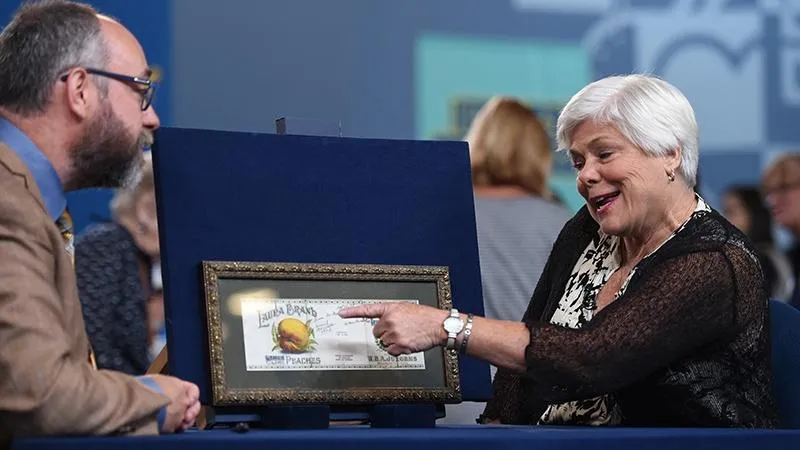
episode

episode
Revisit updated fan favorites from 2002, including a find that moves the expert to tears!

appraisal

appraisal
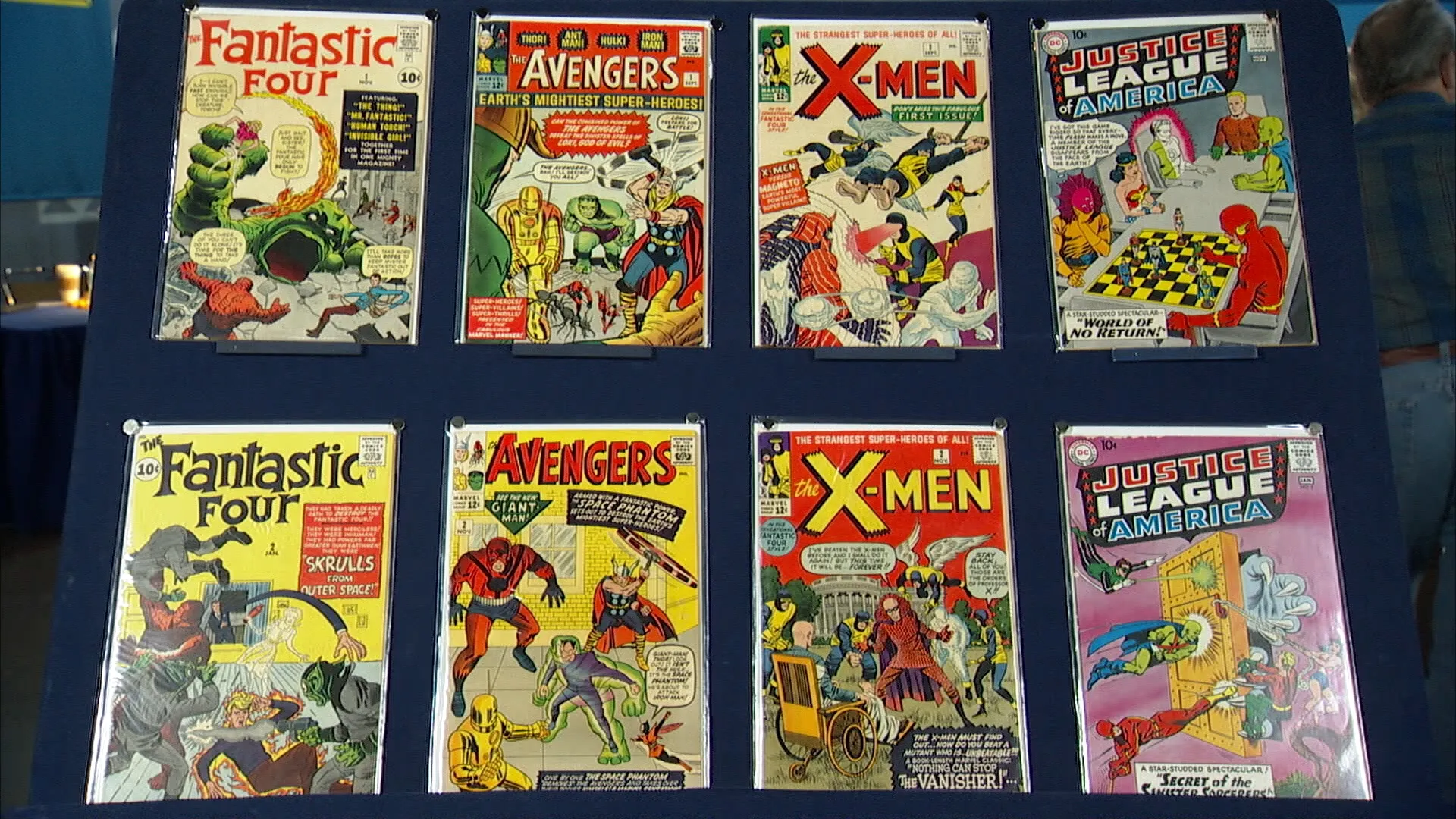
appraisal

appraisal

appraisal

appraisal

appraisal

appraisal
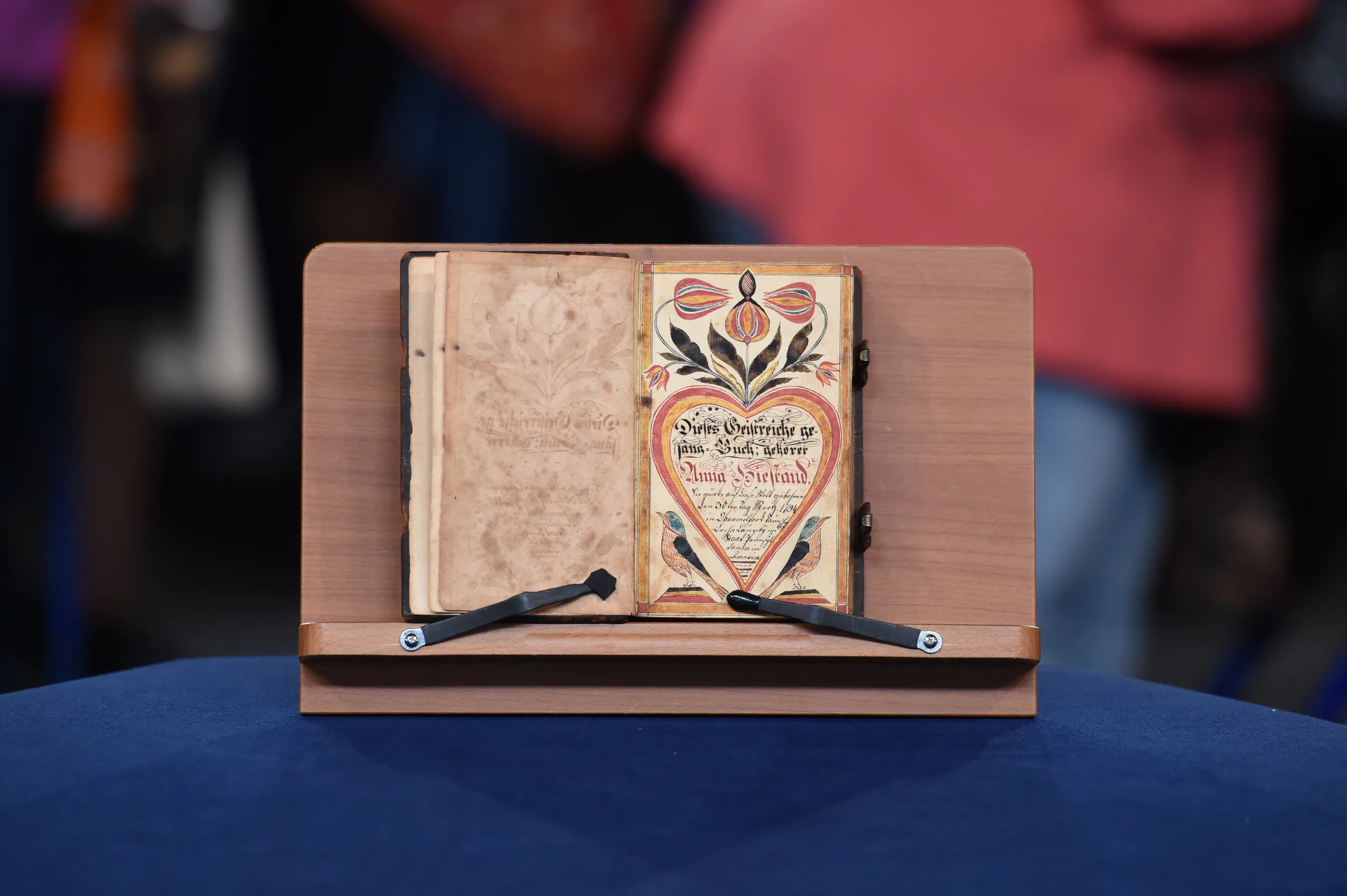
appraisal

appraisal

appraisal

appraisal

appraisal

appraisal
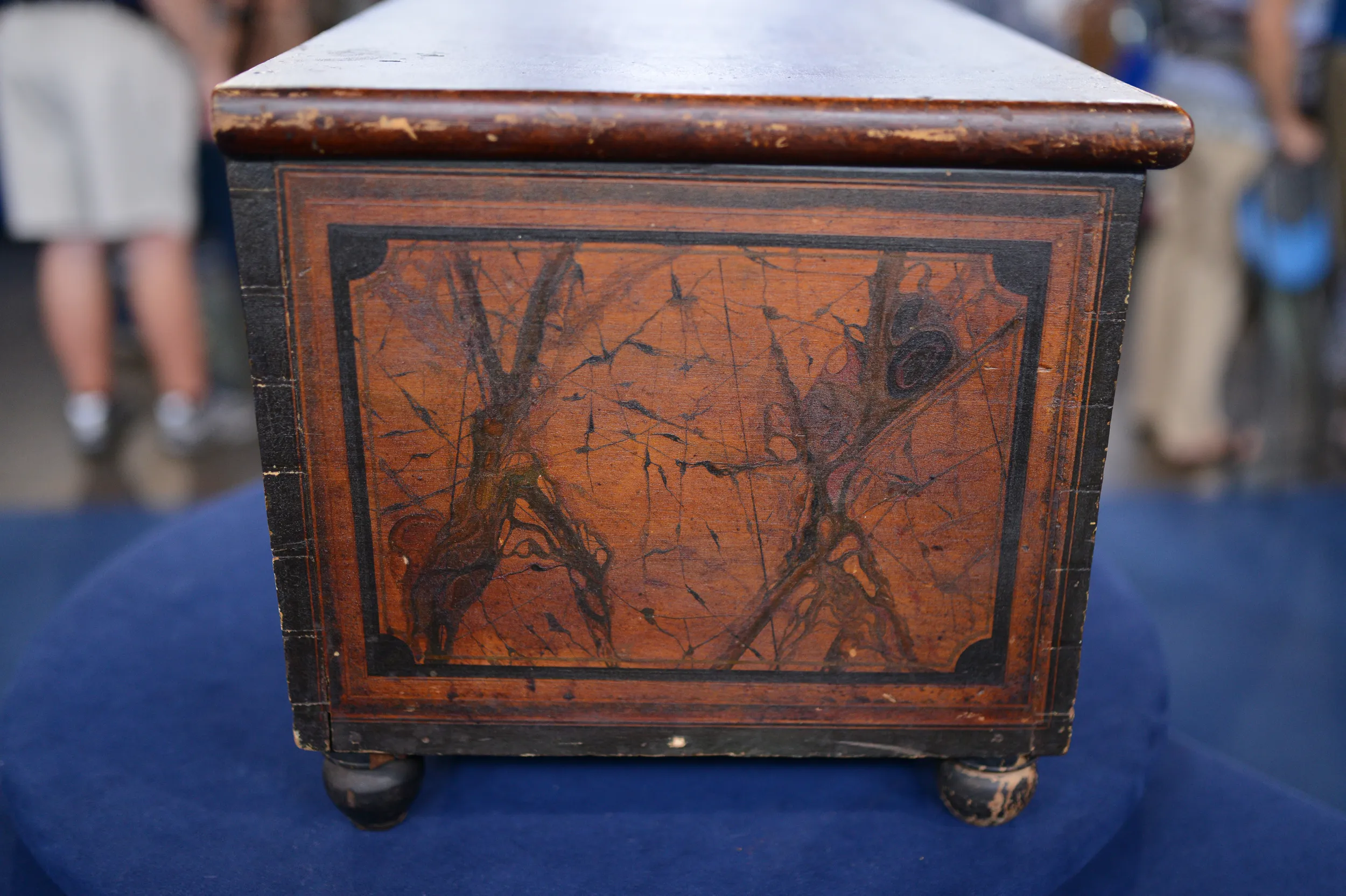
appraisal

appraisal
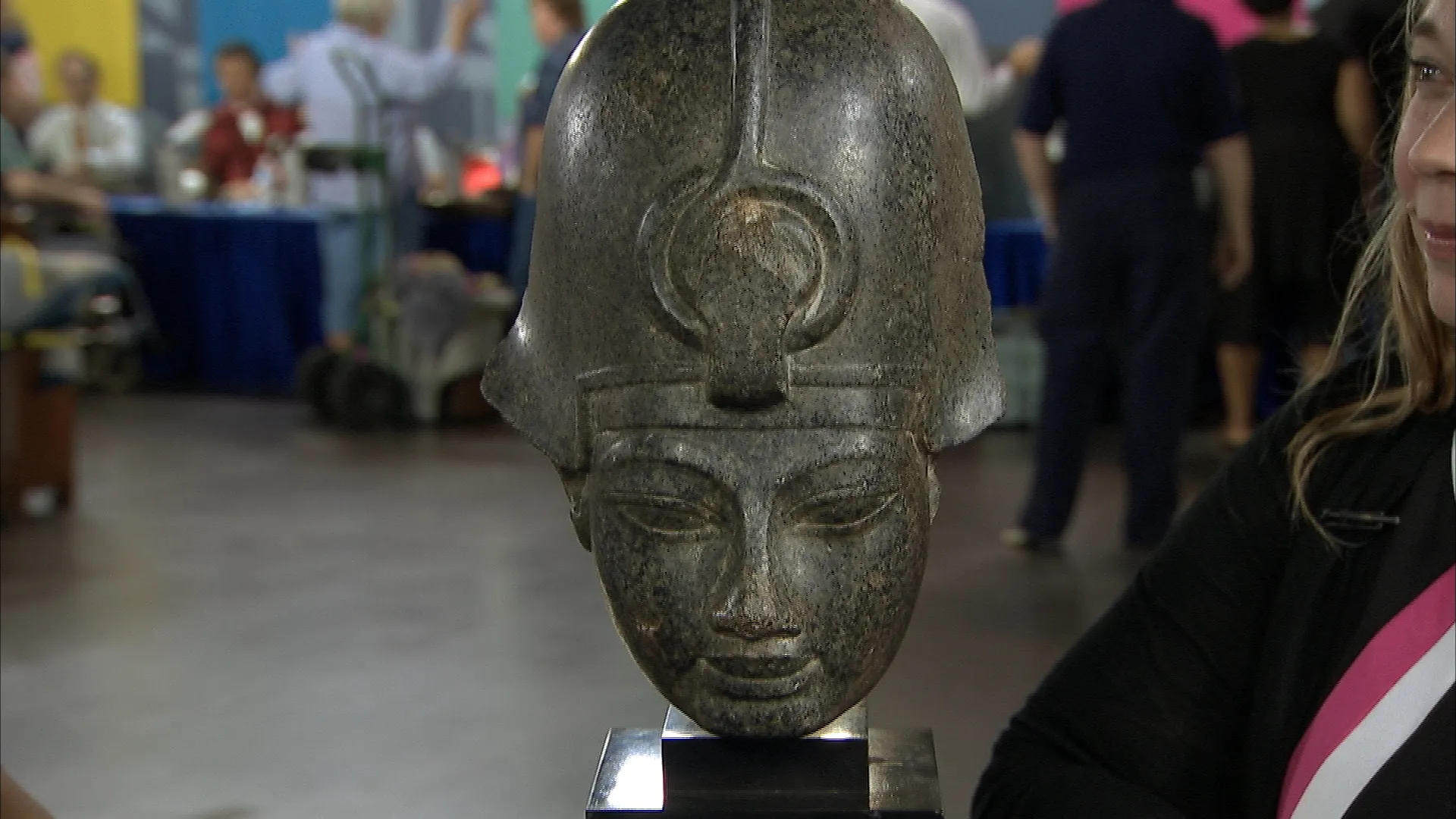
appraisal

appraisal

appraisal




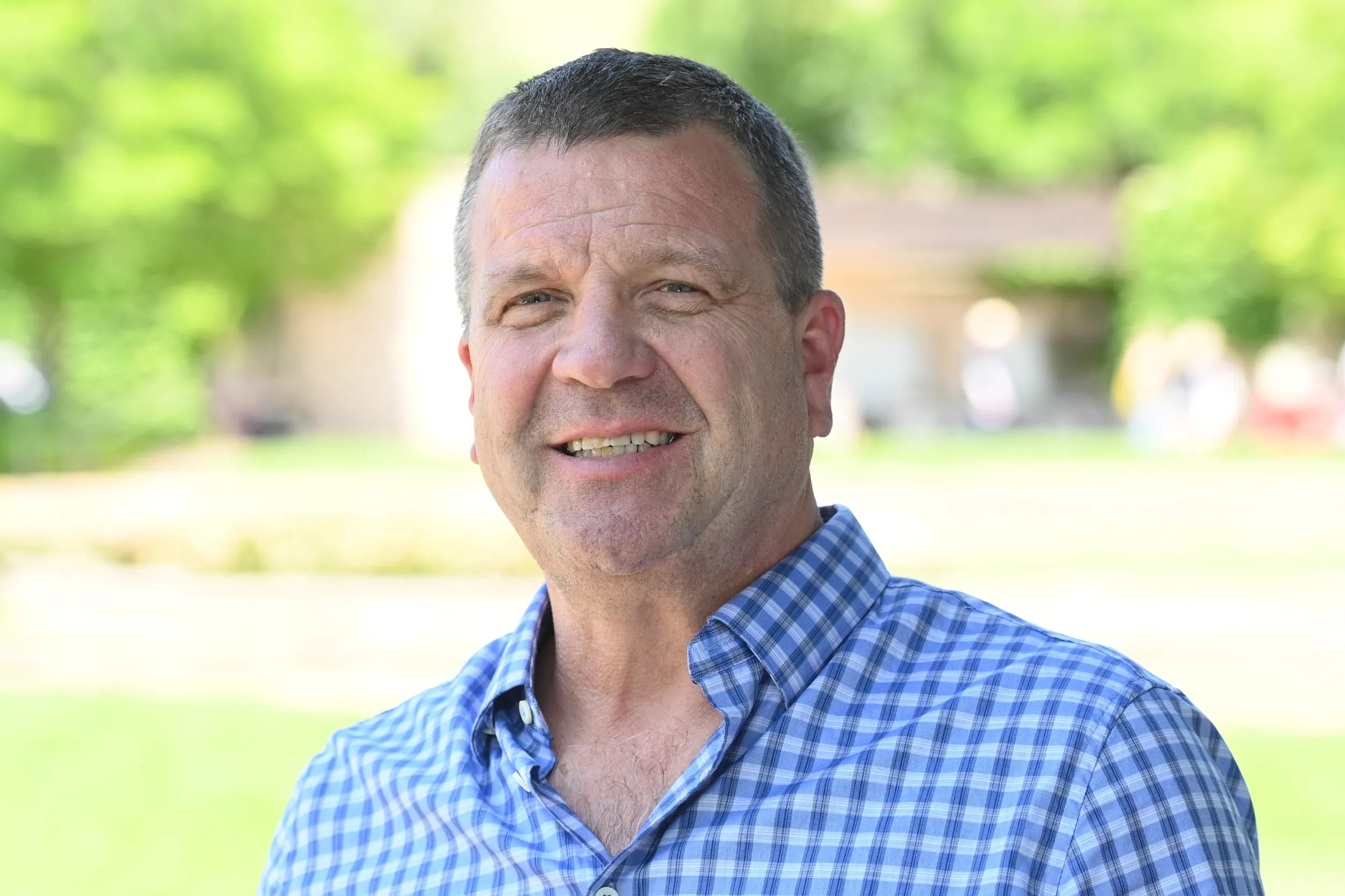






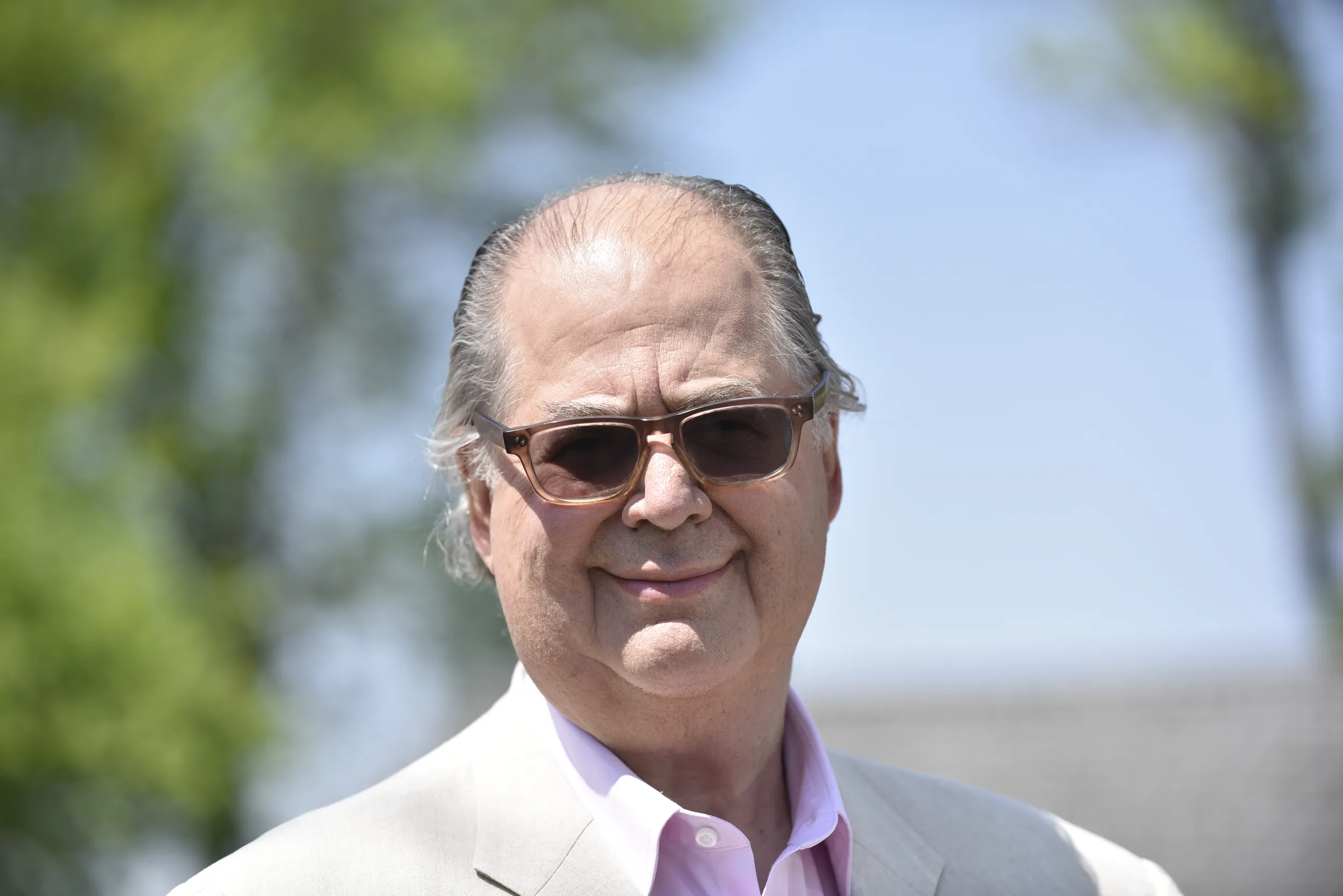


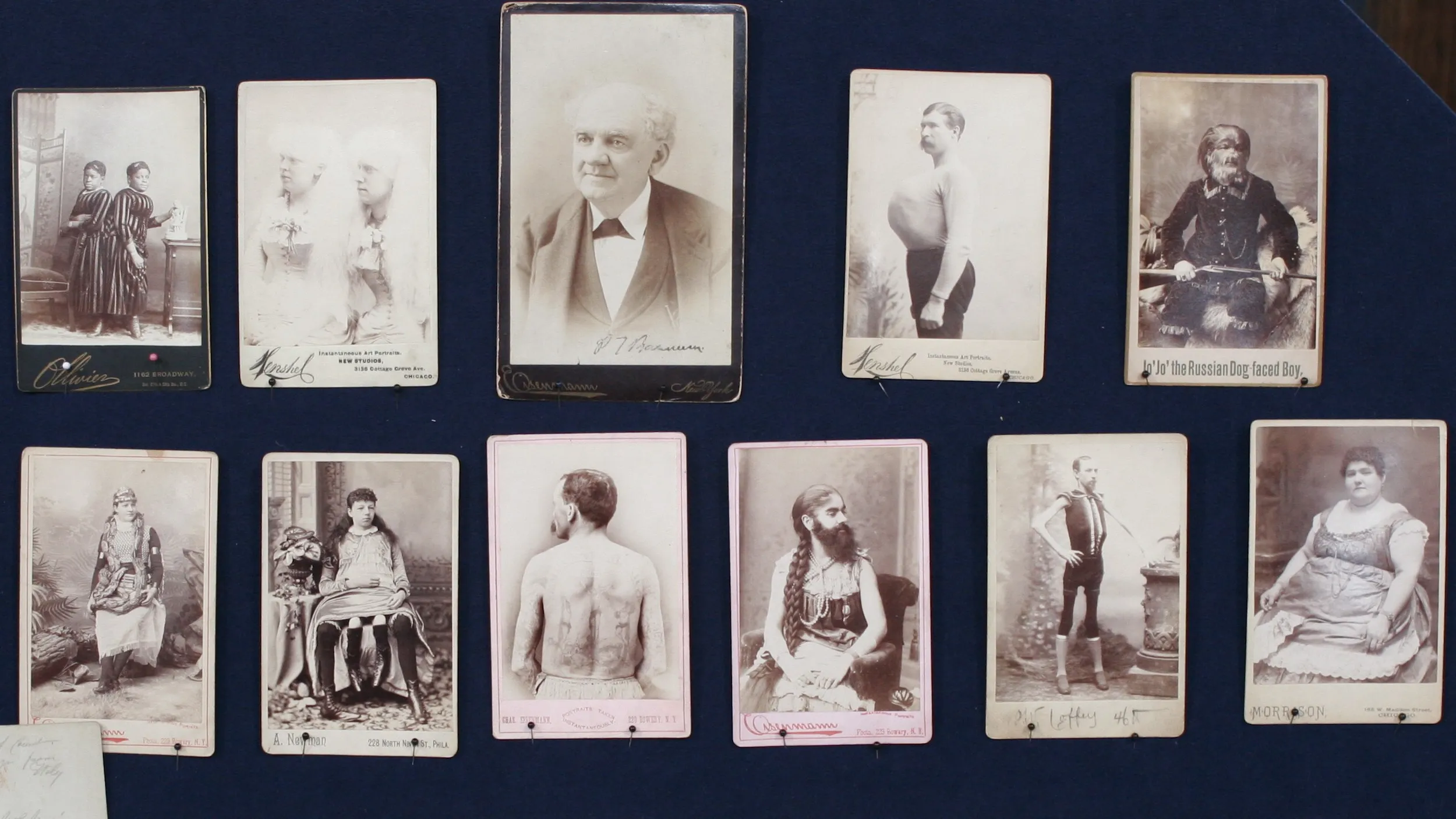
Collectors now buy and sell photographs of former sideshow "freaks" — but who were these people?

Read Albert Einstein's moving, but little-known, 1946 essay on racism in America.
A weekly collection of previews, videos, articles, interviews, and more!
Funding for ANTIQUES ROADSHOW is provided by Ancestry and American Cruise Lines. Additional funding is provided by public television viewers.
ANTIQUES ROADSHOW is a trademark of the BBC and is produced for PBS by GBH under license from BBC, Worldwide. PBS is a 501(c)(3) not-for-profit organization.
A weekly collection of previews, videos, articles, interviews, and more!







